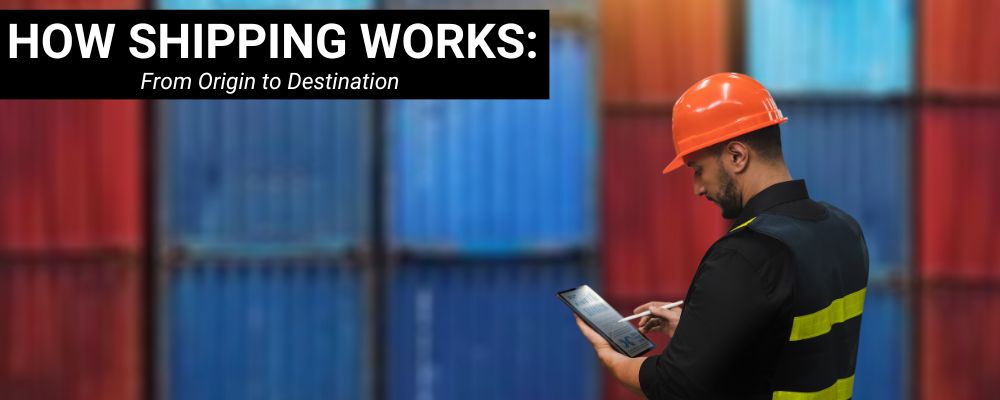
Understanding the Flow of Logistics by Cargo Vessel: A Comprehensive Guide. Logistics is a crucial aspect of international trade, and understanding its flow is essential for a seamless transportation process. In this article, we will delve into the intricacies of Full Container Load (FCL) shipments by cargo vessels. Whether you are an experienced professional or a beginner in handling export or import shipments, comprehending the logistics flow and associated paperwork is vital.
The Initial Steps:
While it may be rare for individuals to personally use containers for transportation, manufacturers across the globe ship their goods overseas every week. Once the cargo is ready to be shipped, the manufacturer’s shipping representative contacts a freight forwarder who acts as an intermediary between them and various parties involved in the shipment process.
Upon receiving relevant details from the manufacturer such as cargo readiness, incoterm trade agreement, port of discharge, volume, and container requirements; freight forwarders can check rates and plan shipments accordingly. They provide sailing schedules with important information like closing time (CT), estimated time of departure (ETD), transit time, ETA (estimated time of arrival), and total charges to facilitate decision-making on booking suitable vessels.
Booking Confirmation & Loading Arrangements:
Once a booking has been made via the freight forwarder with a preferred ETD vessel provided by manufacturers’ choice; they receive confirmation along with vessel details. With this information at hand, manufacturers plan loading dates in coordination with freight forwarders to make necessary arrangements including pick-up/delivery of empty containers from/to container depot.
Leveraging Freight Forwarders’ Services:
Many importers/exporters prefer working closely with freight forwarders due to their expertise and connections within the industry. By doing so, businesses minimize their need to contact multiple parties such as shipping lines, college providers, and customs brokers individually—streamlining processes significantly.
Freight forwarders also meticulously review all required documents to prevent errors that may lead to customs queries or hinder the processing of duty exemptions, such as mistakes found in the certificate of origin. Thus, attention to detail and accuracy is essential.
Container Pick-up & Condition Checking:
To pick up empty containers for cargo loading, freight forwarders visit container depots where shipping lines store their containers. Container depots also handle maintenance tasks like cleaning and repairing. Freight forwarders ensure haulage drivers inspect container conditions before pickup, as quality can vary even when requesting a specific grade A container from the shipping line.
Delivery Schedule Management:
For manufacturers shipping multiple containers per week, effective communication between them and freight forwarders is crucial for proper delivery schedules. Adequate management by freight forwarders ensures timely gate-in of containers before CT set by shipping lines. Sufficient unloading/loading time between terminals and cargo vessels at ports is vital considering the substantial number of containers collected daily.
Gantry Crane Operations & Weight Distribution:
At ports, giant cranes called gantry cranes are responsible for lifting containers onto cargo vessels. Strict control over total container weight and even distribution of cargo within each unit are imperative during this process to maintain stability while being lifted. The meticulousness exercised during loading is instrumental in preventing potential damage caused by uneven road conditions or rough sea conditions experienced during transportation.
Post-Departure Procedures:
Once the vessel departs from the port of loading with loaded containers onboard; freight forwarders continue their involvement by tracking bill-of-lading (B/L) details provided by shipping lines. They then share this information with manufacturers who subsequently send it to consignees once payment has been made—often via courier services like DHL or FedEx.
Before arrival at the port of discharge, consignees receive a notice from the shipping line regarding vessel arrival alongside commercial invoices specifying terminal handling charges and local fees applicable.
Consignees must surrender original B/Ls upon which delivery orders are exchanged after payment of terminal handling charges and local fees. Subsequently, consignees’ freight forwarders initiate customs clearance process by submitting the necessary documents such as B/L and delivery method upto the final warehouse is agreed with consignee.










